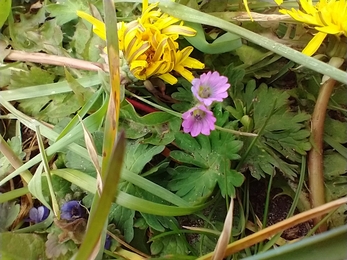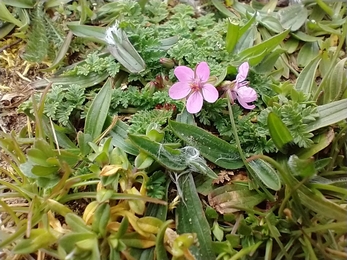Weekly wild news from our reserves - 7 May 2021
Storksbill at Knettishall Heath - David Stansfeld
Seen recently at Black Bourn Valley, the bloody-nosed beetle gets its name from its unusual defence mechanism: when threatened, it secretes a distasteful blood-red liquid from its mouth. The bloody-nosed beetle is a domed, black beetle with a bluish sheen. The line running down its back gives the impression of separate wing cases, but they are actually fused together and this beetle does not fly; it is quite slow moving. It can be found during the spring and summer in grassland, heathland and along hedgerows. One of our largest 'leaf beetles', adults feed on the leaves of lady's bedstraw and related plants, and the larvae can be seen hanging from these species. Adults are mostly active at night.
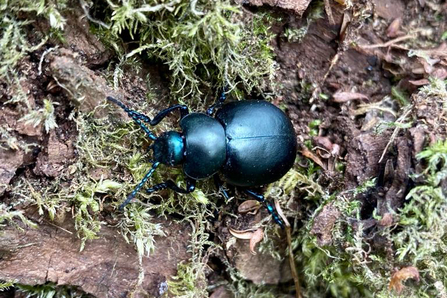
Bloody-nosed beetle – Ben Calvesbert
Dawn chorus day
Sunday was International Dawn Chorus Day. One of our members, Kev West, captured owls hooting at 4:40am and many voices at our Church Farm Reserve. Have a listen here:
Marvellous Mickfield Meadow
Mickfield Meadow is looking its best at this time of year, with a scattering of snake’s head fritillaries and cowslips. A stunning flower-rich hay meadow that has never been sprayed or fertilised, it contains a host of wildflowers, many of which are now scarce in Suffolk. To maintain this rich flora, the meadow is managed by a summer hay cut and then the late summer growth is grazed off. The unusual mix of plants growing here adds to its botanical interest.
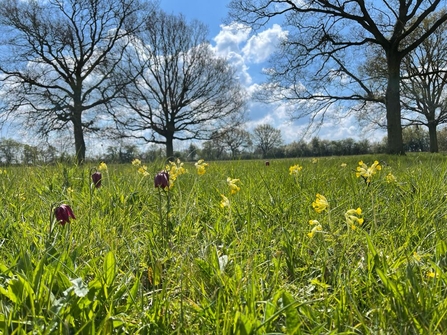
Mickfield Meadow – Steve Aylward
Cheeky stoat!
The stoat is a small mustelid, with a long, low-slung body that makes it particularly well suited to hunting small rodents and rabbits. From this clip taken at Knettishall Heath, you can see that stoats are active by day and night and are easiest to spot in open habitats. They mate in summer, but delay implantation of the fertilised egg until the spring of the following year. They have one litter of six to twelve kits a year. The stoat has an orangey-brown back, a creamy white throat and belly, and a black-tipped tail. It is larger than the similar weasel, has a longer tail and has a distinctive bounding gait, arching its back as it moves; weasels do not bound but run close to the ground.
Small copper
The small copper is on the wing between April and October. Males are territorial and can be seen basking on bare ground or rock waiting for females, every now and again chasing off other insects that encroach on their space. Adults can be seen feeding on ragwort and thistles, while the caterpillars feed on common sorrel and sheep's sorrel. They are found in dry, sunny habitats, including heathland and woodland edges, like this one at Knettishall Heath.
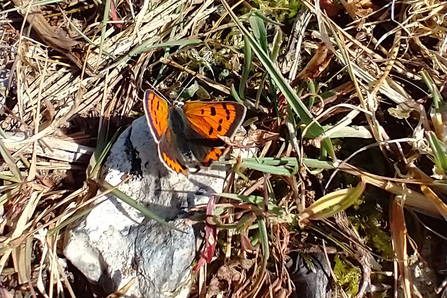
Small copper butterfly at Knettishall Heath – David Stansfeld
Cranes and storks at Knettishall Heath!
We’re actually referring to the plant varieties: cranesbill and storksbill! Both of these emerged from the Breckland sward this week displaying their unique delicate beauty, captured most professionally by David Stansfield, our newly appointed Assistant Warden at Knettishall Heath.


